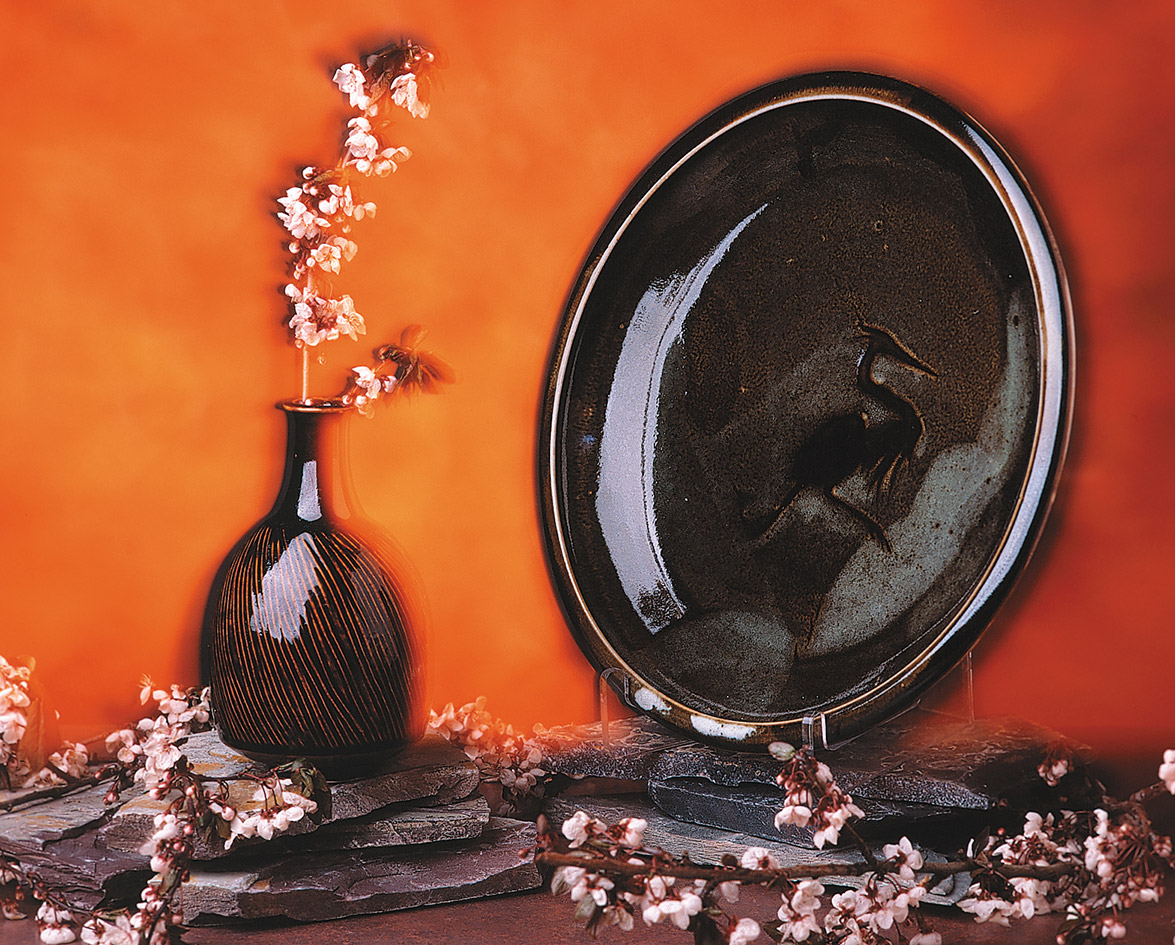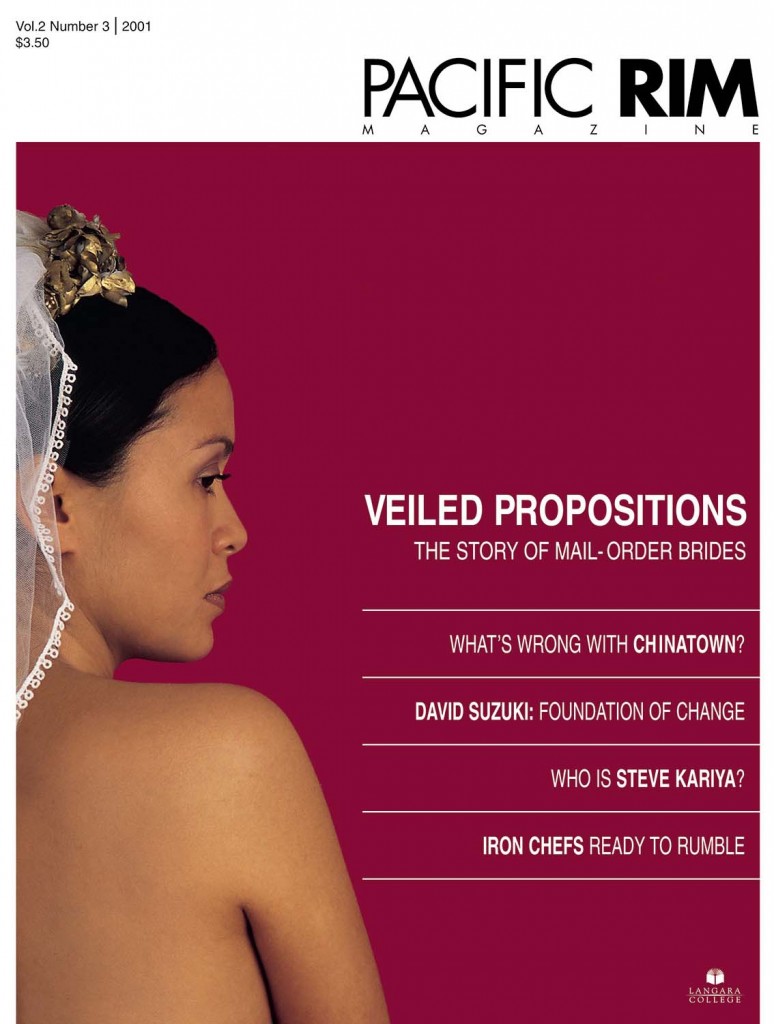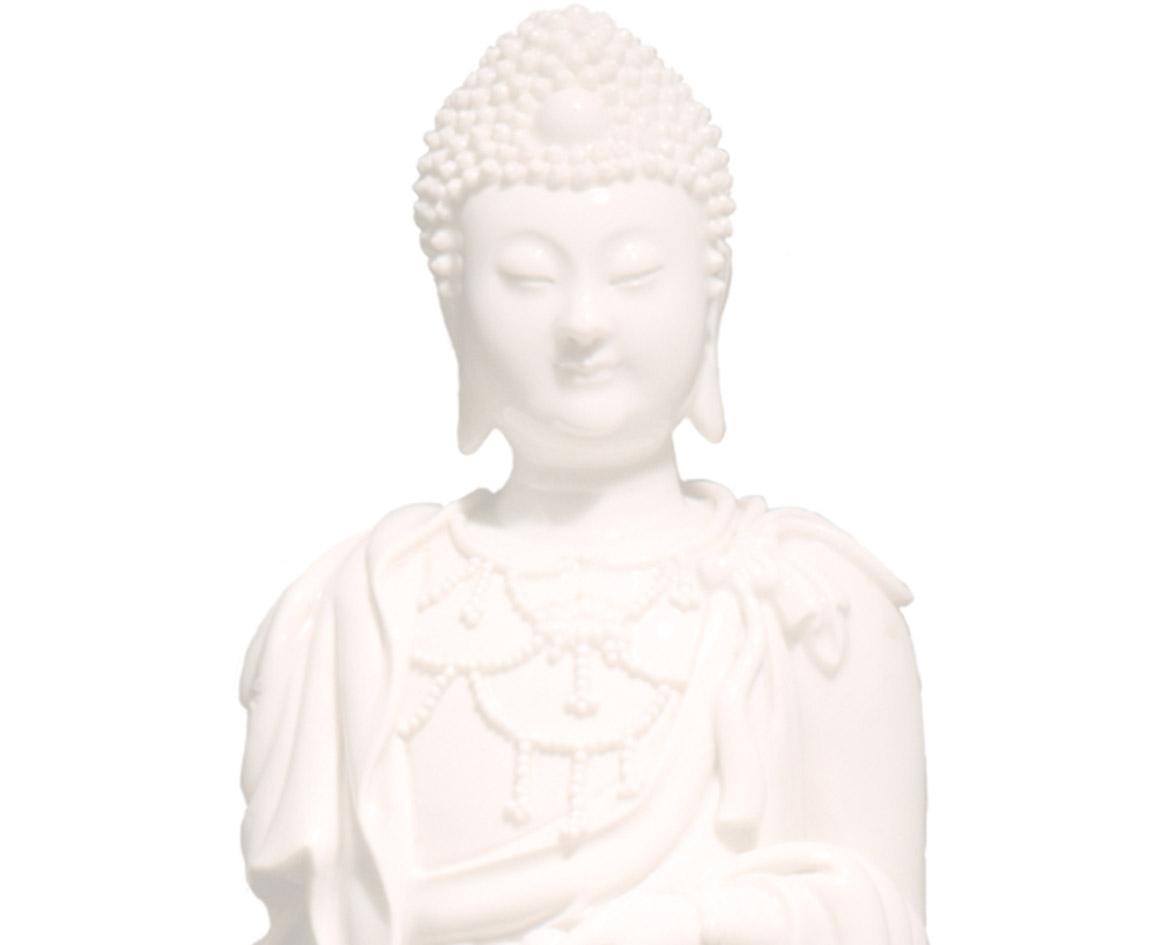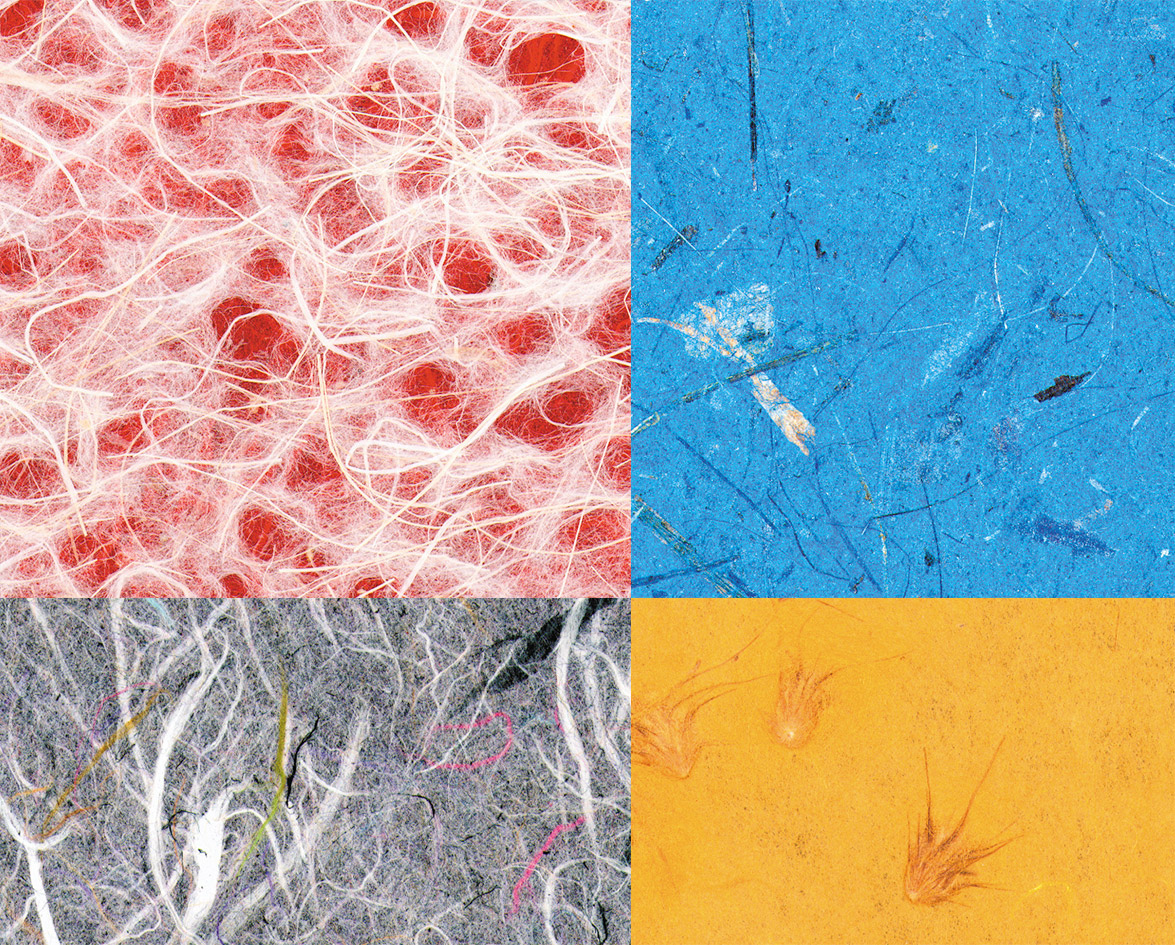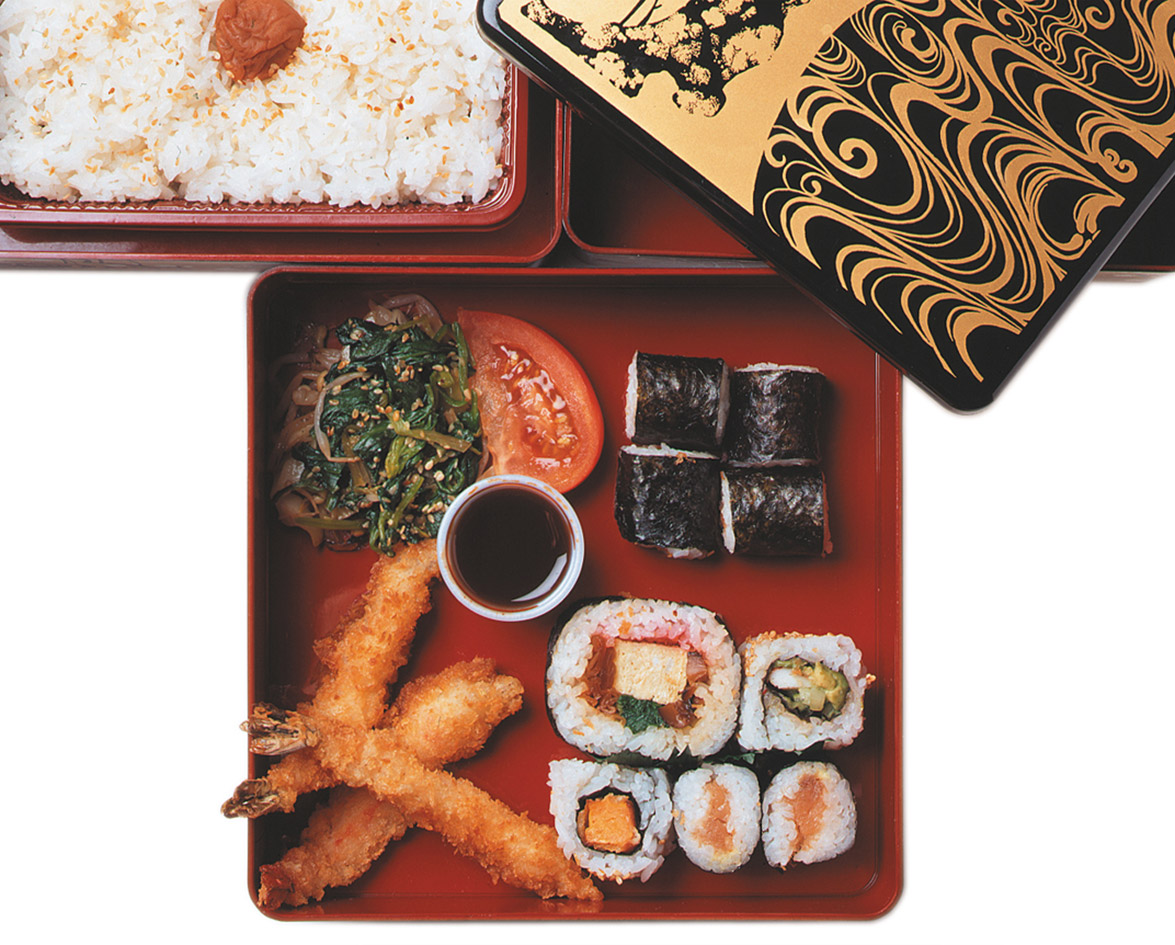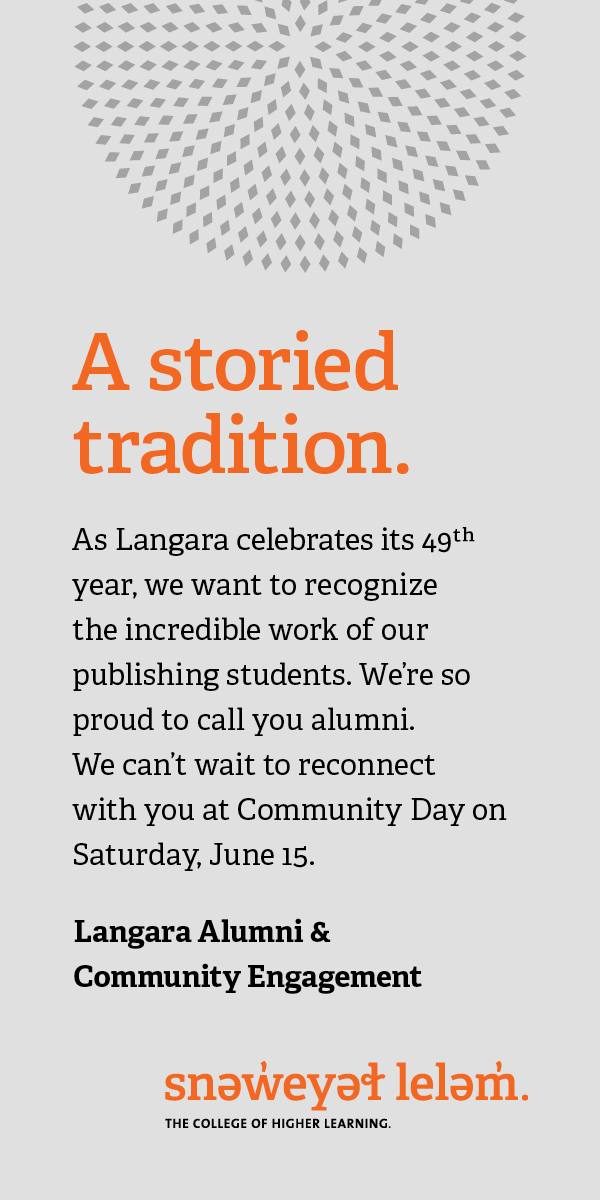Boardrooms across North America are filled with dot com executives wielding digital palm pilots in one hand and funky hand-crafted ceramic mugs in the other. Granville Island potter Don Hutchinson caters to this niche with his unique ceramic ware. Pottery is more popular than ever and ceramics are enjoying an extraordinary renaissance.
A potter for over 35 years, Hutchinson works out of Kingsmill Pottery on Granville Island, and his own studio, White Rabbit Pottery, in White Rock. He learned the medium at the Vancouver School of Art from his mentors, world-acclaimed potters Robert Weghsteen, Heinz Laffin and Wayne Ngan.
The Craft And Heart Of Teaching An Art Form
Hutchinson recalls effective but unconventional classes. Ngan would take his students to Chinatown to learn glazes: “He would show us a salami and a glazed duck in the window of a butcher shop and say, ‘See that cut salami, that texture when the meat is cut, and those different colours? I want you to make that as a glaze. I want your transparent glaze to look like the skin of this duck so that it has this honey colour with its slight transparency.’ That was our goal.”
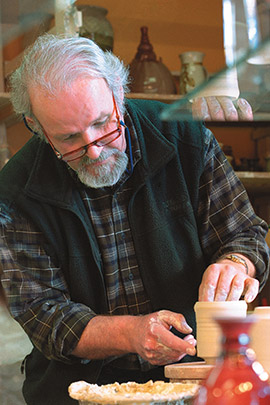
For more than a quarter of a century Hutchinson has shared his ceramics knowledge with hundreds of people at Vancouver’s Langara College. Some of these students have gone on to pursue ceramics careers in Seoul and New York.
When Hutchinson retired from teaching a few years ago his colleague, Vancouver designer Gerald Formosa, remarked: “This man has never done a day’s work in this place; everything was pure loving and play.” He describes Hutchinson as a “sometimes biblical Adam who is all mud and water—pure clay who knows that all the complexity of life is in the simplicity of a bowl viewed from many angles.”
On entering Hutchinson’s peaceful studio, the first thing one notices is a sense of serenity. The room is filled with art made of the most humble of elements—earth. Its polymorphous nature offers unlimited prospects.
Hutchinson holds a thin wire taunt between clenched fists. He slices a ball of rich, dark clay, like cheese. Then, in a sudden violent motion, he flings the clay and watches it fall onto the table. This process is repeated with another slice, and then another. Slicing, he explains, cuts through any lumps, and flinging the clay squeezes out air. He seasons the clay by wedging and rolling it until it is uniformly moist.
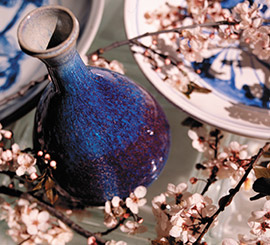
Over the past decade, Hutchinson has worked mostly with stoneware and earthenware. He laughs at the belief that tea tastes better in a fine bone china cup: “This is untrue because porcelain is inert. The toilet bowl is also porcelain.”
Unlike porcelain, stoneware and earthenware permit the use of bright glazes. Hutchinson explains that most ceramic colours come from metallic oxides in the glaze. Cobalt yields blues, and copper oxide produces reds or greens. Iron oxide makes yellows, browns and blacks, and manganese creates purples.
Glazes offer colour and rich visual textures resembling glass, satin or soft dapples. Regardless of the type of clay or glaze he works with, Hutchinson’s primary goal is to make something beautiful and technically sound.
To Hutchinson, a good ceramic reflects balance and harmony between form and surface. He says that his work is a blend of eastern and western ideas: “The proportions and lines are in the aesthetics of Song China, while the decorations and designs are fresh, quirky drawings influenced by 9th century Persian pot designs.” Much of the Asian influence in Hutchinson’s work is due to his exposure to art during his travels in China, Japan and Korea.
Practice Makes Perfect
Before Hutchinson began his ceramics career in his early 20s, he worked as an instrument technician for the Canadian Air Force. One evening after some serious drinking, Hutchinson and his colleagues decided to draw pictures of each other. The next day, while staring at the drawings sprawled on the coffee table, he realized he could draw amazingly well. This realization was a turning point in Hutchinson’s life. At that moment he decided to study fine art.
Early in his career Hutchinson was drawn to the colour, form and harmony of ceramics. The medium allowed him to combine his interest in painting and sculpture. However, pottery did not come easily: “It was awful! I could not do it at first. I was sort of a mechanical klutz. I could not center the clay or anything. It was terribly depressing, but I stayed and persisted.”
Hutchinson worked day and night, weekends and vacations, until he was able to mould the clay effortlessly in his hands. Eventually, he began to see the fruits of his labour.
Young cyber-executives can assess the value of their coffee mugs by determining if they reflect human attributes of honesty, humility and elegance. The work of the potter is to incorporate human character into art. Hutchinson says the artist must feel this process; it cannot be intellectualized. In pottery, Don Hutchinson combines form and surface to produce, rhythm and harmony—a reflection of his own character.





